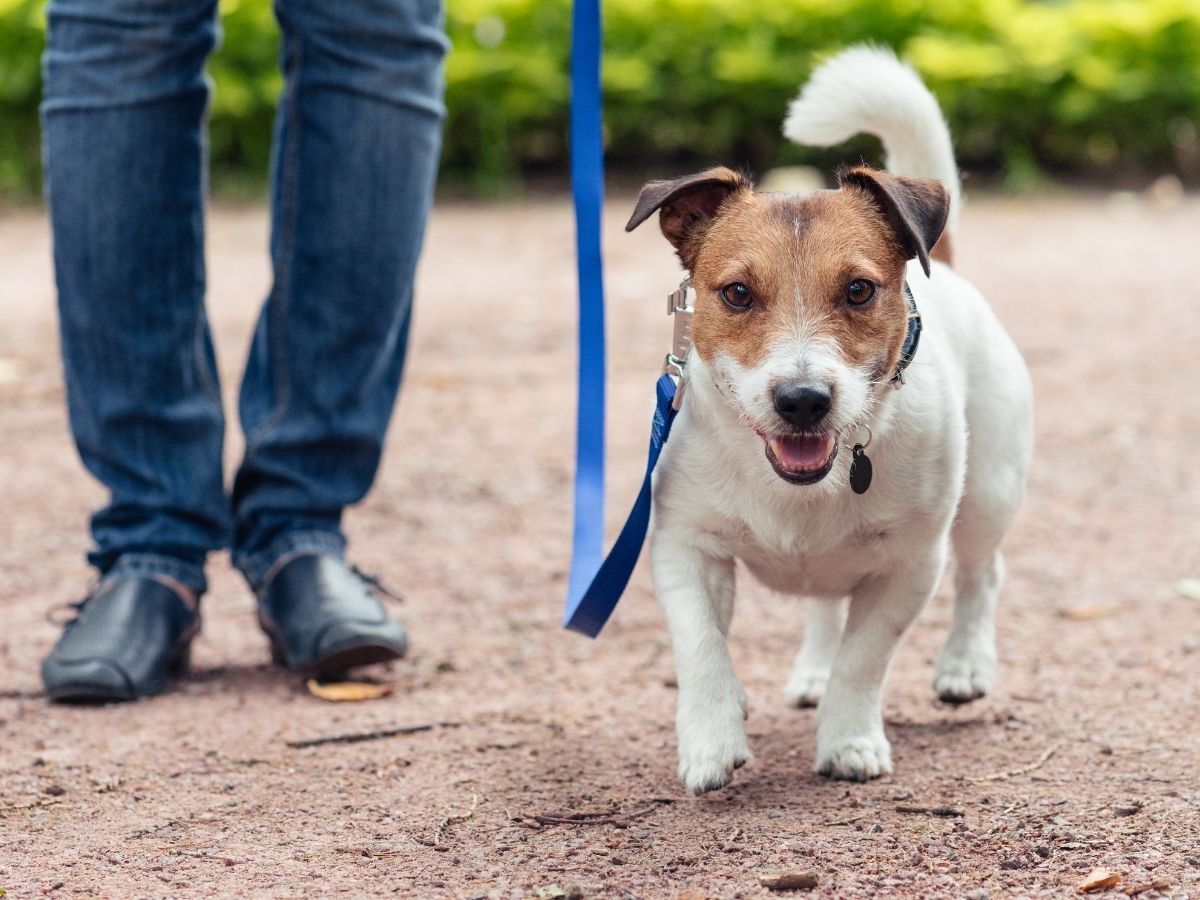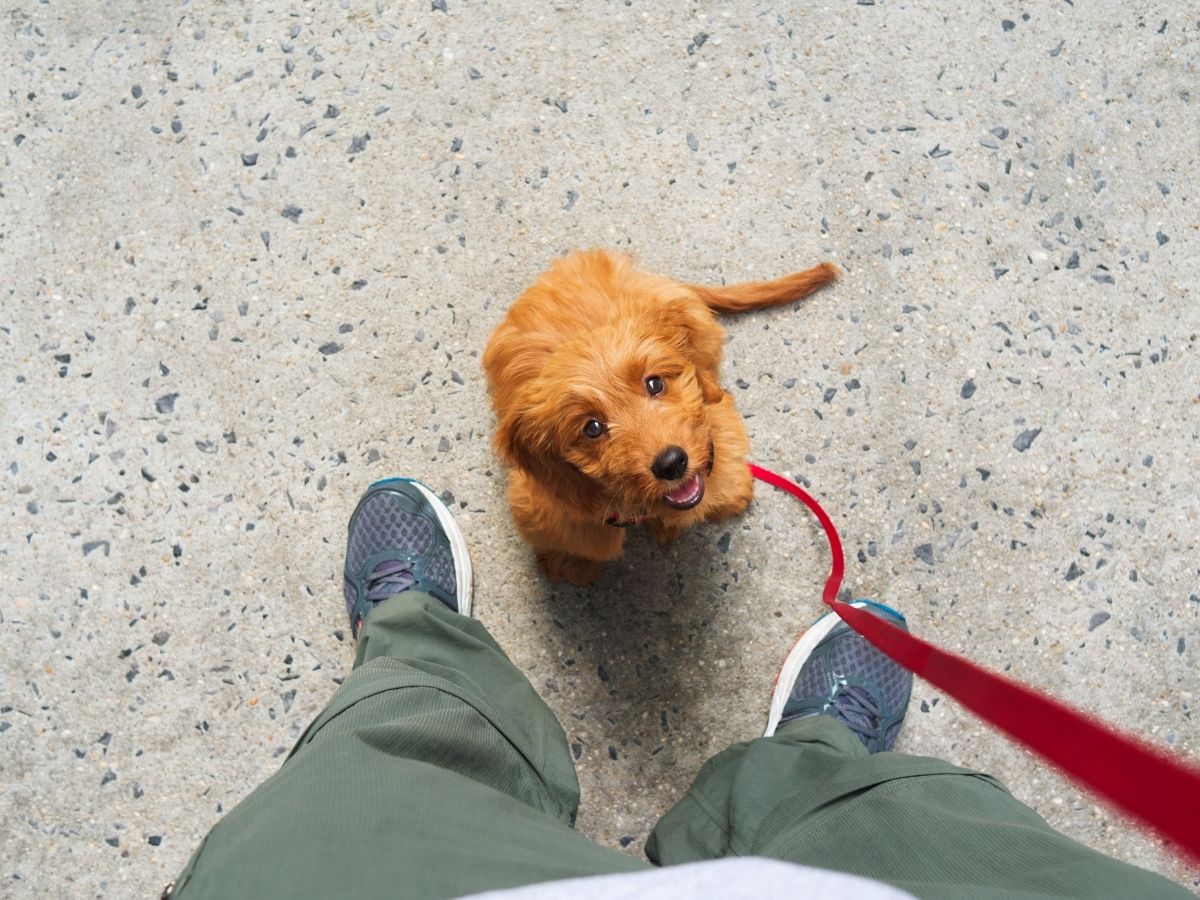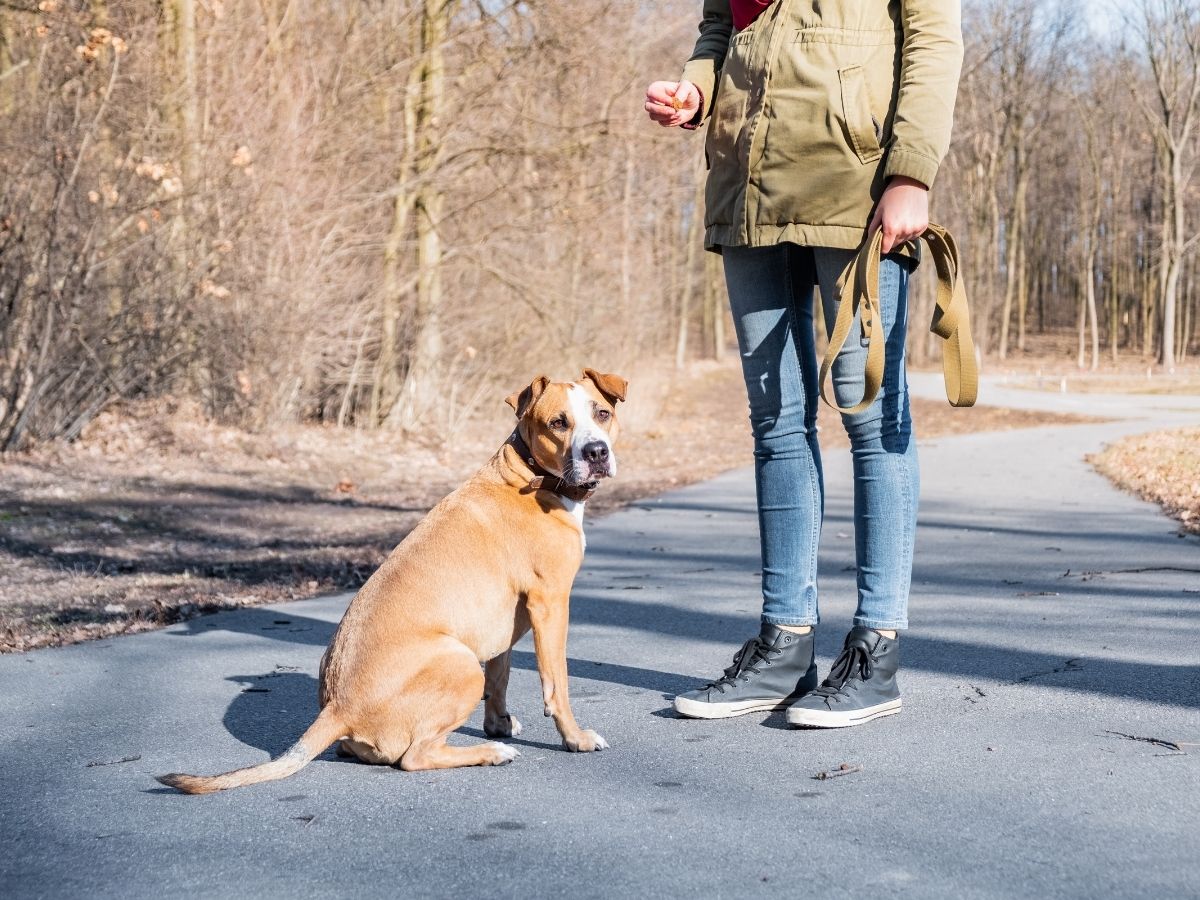It’s time to get your furry best friend out for some extra playtime and exercise! Now is an excellent opportunity for a refresher on loose leash walking and reinforcing appropriate walking behavior. If you have a pup, the great news is that you can start your loose-leash training right at home. By committing to loose leash training, you will have a much more enjoyable dog walking experience for both you and your pup. Loose-leash walking may take longer than teaching your dog commands like “sit” or “down,” but with patience and consistency, your walks will improve! Keep reading for loose leash walking tips.
Explaining Loose Leash Walking and Why it is Important
Loose-leash walking differs from conventional heel training. Conventional heel training requires the dog to stay alongside you. Loose leash walking, on the other hand, gives your dog greater freedom to investigate and explore while holding the leash more loose with some slack.
Why is teaching my dog loose leash walking important?
First, loose leash walking allows you and your dog to walk comfortably. A dog yanking and pulling on a leash can oftentimes make for an uncomfortable walking experience for you and your four-legged best friend.
Second, when you confidently have control over your dog and they are focused on you, they are less likely to get injured.
Tips for Loose Leash Walking Training
Use positive reinforcement tactics
Before starting loose leash training, make sure you have enough high-value goodies on hand. If you don’t have the goodies on hand, try showering your pet with praise. Then, select the most motivating incentive and provide it freely when they execute the required action. Good, reward based training is the objective here, so your dog associates positive connections with the behavior you, as the owner, is looking for. Giving your dog a few treats or pets in exchange for sticking close by is key to mastering loose leash walking.

Training Manual for Loose Leash Dogs
Here are a few suggestions on how to teach your canine to walk on a leash with minimal pulling:
Begin indoors
When you’re ready to start loose leash training, look for an area in your home with very little distraction like a corridor with all of the doors closed. Begin going ahead with your dog on at least a 4 foot leash that is non-retractable. Freeze in place right when the leash tightens. Do not jerk the leash and try not to lean forward if the leash pulls you in that direction. Consider yourself to be a tree — sturdy and motionless. Wait for a few moments, and ignore your furry best friend until they make any movement, causing the leash to relax slightly. Praise cheerfully and take a step ahead. Take as many steps as possible before the leash tightens again. Stop!
Now, once again, wait for the dog to let go of the leash, then praise and go. Do not proceed unless the leash has slack.
Walking down the hall will seem like it takes 10 years, but maintain your focus. Consider a tight leash to be a red light and a slack leash to be a green light. You don’t even need rewards for this activity because just getting your dog to walk forward is a reward in and of itself.

Bring it outside
Take your dog outside after they have mastered the exercise. Yes, you will be the one who takes a step, then stops and looks around the street. You’ll be the person whose dog isn’t pulling you for a walk in a few weeks. Begin with one step, repeating as necessary.
Provide incentives for check-ins
On walks, reward your dog with high-quality treats and lots of praise every time he checks in with you. Check ins simply mean every time he turns and makes eye contact with you. Dogs that are focused on their handlers will not usually pull out as often in front of them. Sing a tune to the dog or create unusual noises to promote check-ins. Give your dog as many chances as possible to glance up towards you, and reward your dog for coming to you. Without being asked, choosing to gaze at you or be at your side merits a reward from you.
Training While Your Dog is Tired
One of the best times to train your pet is when they are tired. When your pet is full of energy, it will struggle to master a new skill until they have had a chance to run, move, and wear off some energy. You’ll have more success early on once the dog has burned up any pent-up energy and can calm down and focus.
How long will it take my dog to learn loose leash walking?
Walking on a loose leash is extremely different for our dogs than learning cues like “sit” or “down.” We typically notice the benefits straight away in cue training; however, loose leash walking takes time. Our dogs will improve gradually, but it won’t happen immediately.
Consider a stroll in terms of time rather than distance, such as “I will walk my dog for 30 minutes.” EVERY TIME my dog pulls, I will come to a halt. We may merely stroll for one block, but the leash will be untethered.” Remember that dogs are gamblers, and if pulling works once in 300 attempts, they will continue to try. Loose leash walking takes practice, time, and consistency.
Last Tips on Loose Leash Walking

With positive reinforcement, consistency in halting every time your dog pulls, ensuring your dog has had some exercise before starting the training, and staying positive throughout the process, your dog will learn how to successfully walk on a loose leash.
Working together to create trust and understanding by employing positive reinforcement and calm body language. Your dog will want to obey you, and you’ll both learn to enjoy themselves on walks as a team. Our four-legged buddies require the exercise and excitement of a regular stroll, so we hope the above tips on loose leash walking help make the process easier. If your schedule does not permit it, arrange for a stroll with Latchkey Pets. We are the daytime dog walkers and vacation pet sitters you can trust!
